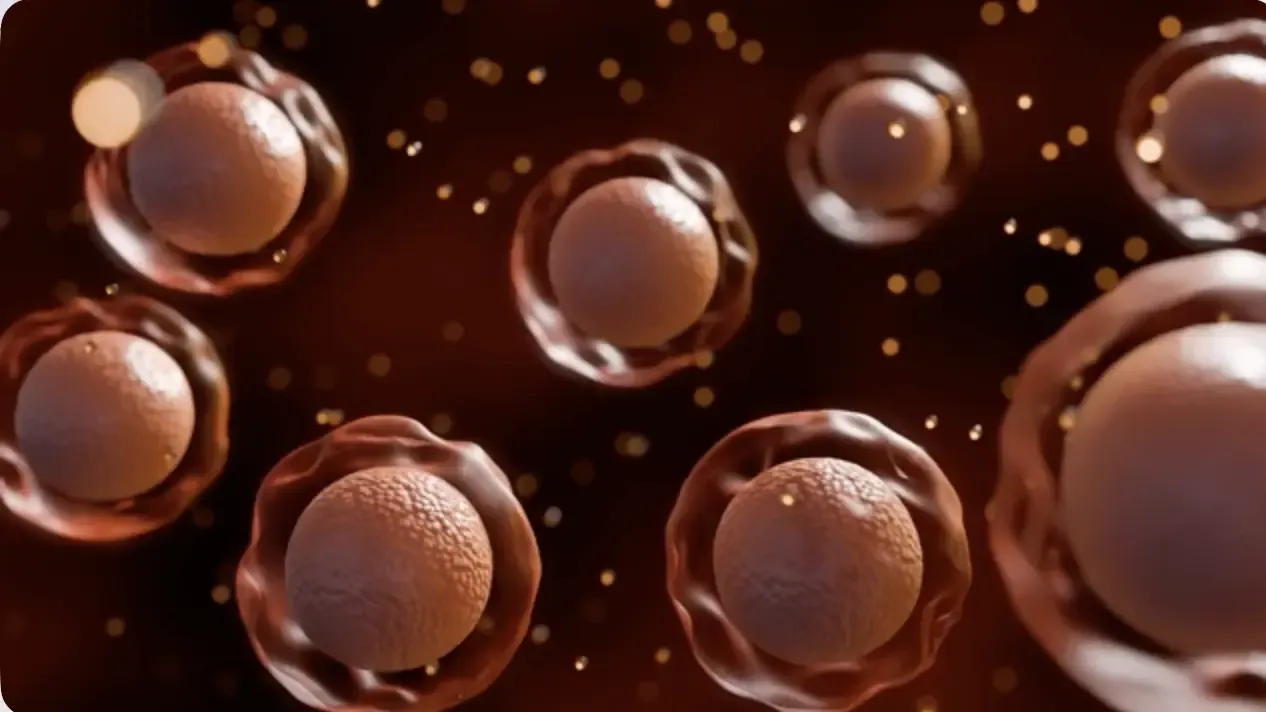
Department of Cell and Molecular Biology
The Department of Cell and Molecular Biology at Karolinska Institutet is a nationally leading academic research center of high international standard where science comes first and foremost. CMB researchers publish regularly in the best international science journals, a result of a long-term in-house culture that promotes real impact and key breakthroughs.
Menu for this area
CMB News
 Photo: Erik Flyg
Photo: Erik FlygTrio of KI researchers join forces against Parkinson's disease with donation from Promobilia
The Promobilia Foundation is donating SEK 25 million to enable four research groups from Karolinska Institutet and Lund University to join forces in a major research project designed to develop new treatment strategies for the fundamental causes of Parkinson’s disease. The quartet will be using innovative methods, including advanced gene therapies and target-specific vectors, which are able not only to reach but also to protect the most vulnerable cells in Parkinson’s disease.
“Parkinson’s disease is the most common neurodegenerative disease after Alzheimer’s, and causes suffering and lost opportunities to live a full life for millions of people,” says Professor Thomas Perlmann at the Department of Cell and Molecular Biology, Karolinska Institutet. “Current therapies alleviate the symptoms for a while, but don’t stop the disease progressing.”
 Photo: Getty Images,Getty Images/iStockphoto
Photo: Getty Images,Getty Images/iStockphotoHow the nervous system activates repair after spinal cord injury
Researchers from The Department of Cell and Molecular Biology at Karolinska Institutet have now mapped thousands of so-called enhancers; small DNA sequences that act like “switches” for genes, turning them on or boosting their activity. By analysing individual cell nuclei from mice with spinal cord injuries using AI models, the researchers discovered that these genetic switches are activated after injury and instruct specific cell types to respond. The main cells affected were glial cells such as astrocytes and ependymal cells – support cells that help protect and repair the nervous system.
 Photo: Getty
Photo: GettyNew Study Reveals Surprising Diversification of Blood Stem Cells
Researchers from Karolinska Institutet have a new publication in Nature Genetics about their surprising finding.
"We were excited when we realized that we could use naturally occurring mutations in human blood stem cells to fate map their lineage contribution, and even more so when we observed that the blood lineage replenishment patterns from human stem cells matched those we had previously observed in mice,” says Sten Eirik Jacobsen, Professor of Stem Cell Biology and Regenerative Medicine at the Department of Cell and Molecular Biology and Department of Medicine, Huddinge and head of the Hematopoietic Stem Cell Biology Group.
 Photo: Getty Images.,Getty Images
Photo: Getty Images.,Getty ImagesNew research confirms that neurons form in the adult brain
A study in the journal Science presents compelling new evidence that neurons in the brain’s memory centre, the hippocampus, continue to form well into late adulthood. The research from Karolinska Institutet provides answers to a fundamental and long-debated question about the human brain’s adaptability.
The hippocampus is a brain region that is essential for learning and memory and involved in emotion regulation. Back in 2013, Jonas Frisén’s research group at Karolinska Institutet showed in a high-profile study that new neurons can form in the hippocampus of adult humans. The researchers then measured carbon-14 levels in DNA from brain tissue, which made it possible to determine when the cells were formed.
 Photo: Linda Lindell
Photo: Linda LindellHigher levels of HIF2α slow down aggressive childhood cancer
Researchers at Karolinska Institutet and Umeå University have investigated how the protein HIF2α affects neuroblastoma, a severe form of childhood cancer. The results show that high levels of HIF2α can reduce the growth of tumor cells and promote their maturation into a less aggressive cell type.
“Our results show that high levels of HIF2α lead to decreased MYCN levels, reduced cell proliferation, and a shift toward a more mature cell type,” says Juan Yuan, one of the researchers behind the study at the Department of Cell and Molecular Biology (CMB).
The study thus challenges the previous notion that HIF2α always acts as a cancer driver in neuroblastoma. Instead, the findings suggest that the protein may, in some cases, play a tumor suppressive and maturation-promoting role.
“This gives us new insights into how neuroblastoma develops and may eventually contribute to new treatment strategies,” says Johan Holmberg, professor at the Department of Molecular Biology at Umeå University and affiliated to CMB at KI.
Latest publications
Molecular movie reveals how critical mitochondrial enzyme processes RNA
High-resolution structures explain the mechanism of human PNPase and provide insights into mutations causing hereditary hearing loss and neurological disease.
Researchers at the Department of Cell and Molecular Biology, Karolinska Institutet have captured the first detailed molecular snapshots of human polynucleotide phosphorylase (hPNPase) in action, revealing how this essential mitochondrial enzyme degrades RNA through an elegant base-flipping mechanism. The findings, published in Nucleic Acids Research, provide unprecedented atomic-level detail of the enzyme's catalytic cycle and explain how mutations in this protein lead to severe inherited diseases.
Tiny Tweaks to microRNAs Uncover Big Insights into Gene Control
Researchers at Karolinska Institutet and Uppsala University have developed a powerful new technique to better understand how tiny molecules in our cells, called microRNAs, control which genes are turned on or off — a discovery that could improve how we study diseases from cancer to neurodevelopmental disorders.
Led by Dr. David Kosek and Dr. Emma R. Andersson from the Department of Cell and Molecular Biology the team used a clever molecular trick: they altered just two tiny spots in the miRNA specifically in miR-34a so it could no longer bind to parts of the target RNA. They then measured how this change affected gene expression in human cells.
Mapping of a gigantic salamander genome reveals secrets of regeneration
Researchers at Department of Cell and Molecular Biology have mapped the genome of the Iberian ribbed newt and revealed how the composition and organization of the DNA are linked to its ability to regenerate entire body parts.
Salamanders are known for their unique ability to regenerate entire body parts and for their resistance to tumor development. The molecular mechanisms behind these traits have been difficult to study due to a lack of knowledge about the composition of their genome. Researchers at Karolinska Institutet have now succeeded in mapping the genome of the Iberian ribbed newt, providing new insights into these fascinating processes.
New technique developed for targeted protein degradation
A new publication in Nature Communications from researchers at The Department of Cell and Molecular Biology solves a long-standing problem by establishing a system that allows site-specific protein degradation within mitochondria, the cellular hubs for energy production and metabolism.
Understanding how cells work often requires manipulating protein function. Methods used to do this usually cause total ablation of protein function and cannot provide information about their specific roles within different cellular compartments. This is especially challenging for organelles like mitochondria. Addressing this, the researchers present, for the first time, a technique for targeted protein degradation within the mitochondria of yeast and human cells. They have also devised a way to control the induction of degradation, thereby allowing time-resolved analysis.
News at CMB
Job opportunities at CMB
Events
CMB Calendar
For CMB Staff
Newsletter for staff and affiliates at CMB
Newsletter for staff and affiliates at the Department of Cell and Molecular Biology
News archive
More articles, news and events
News, articles and events from CMB, listed by year.
